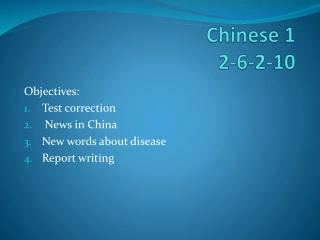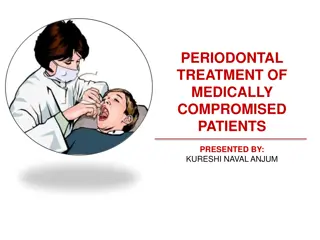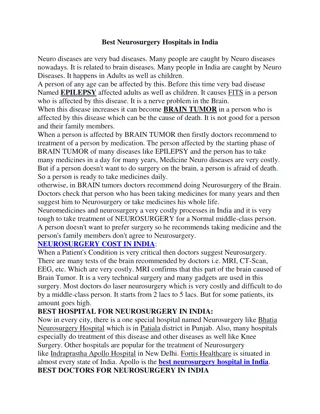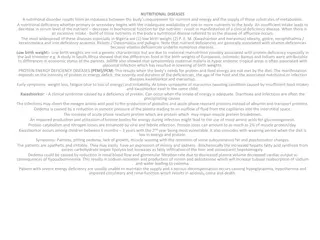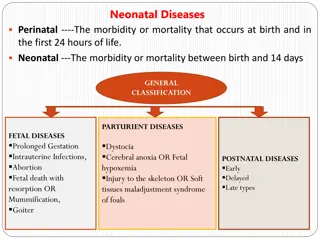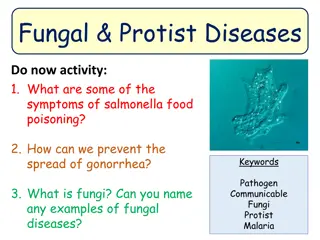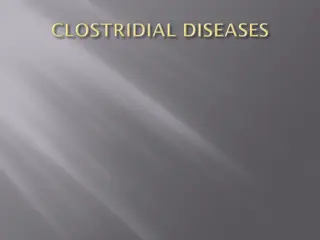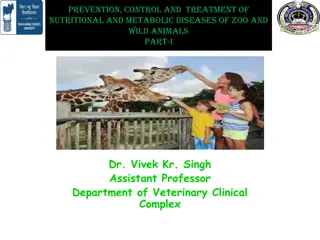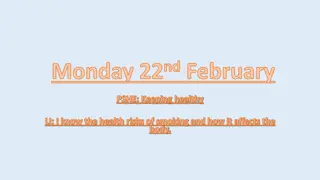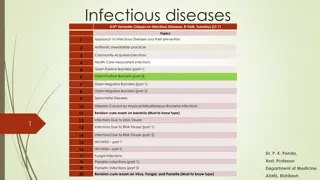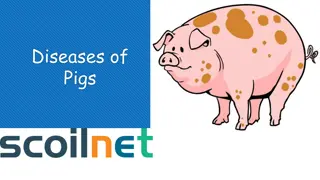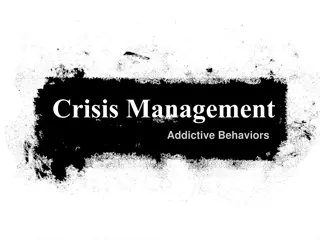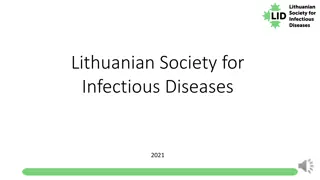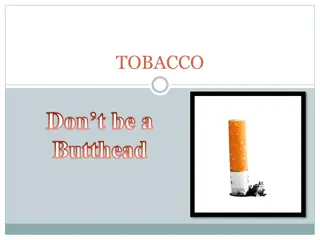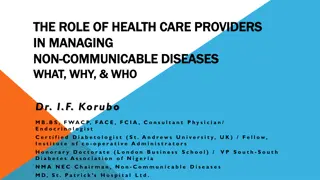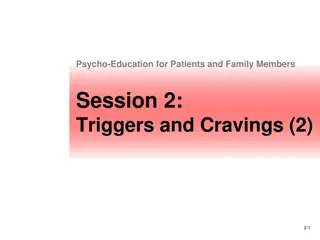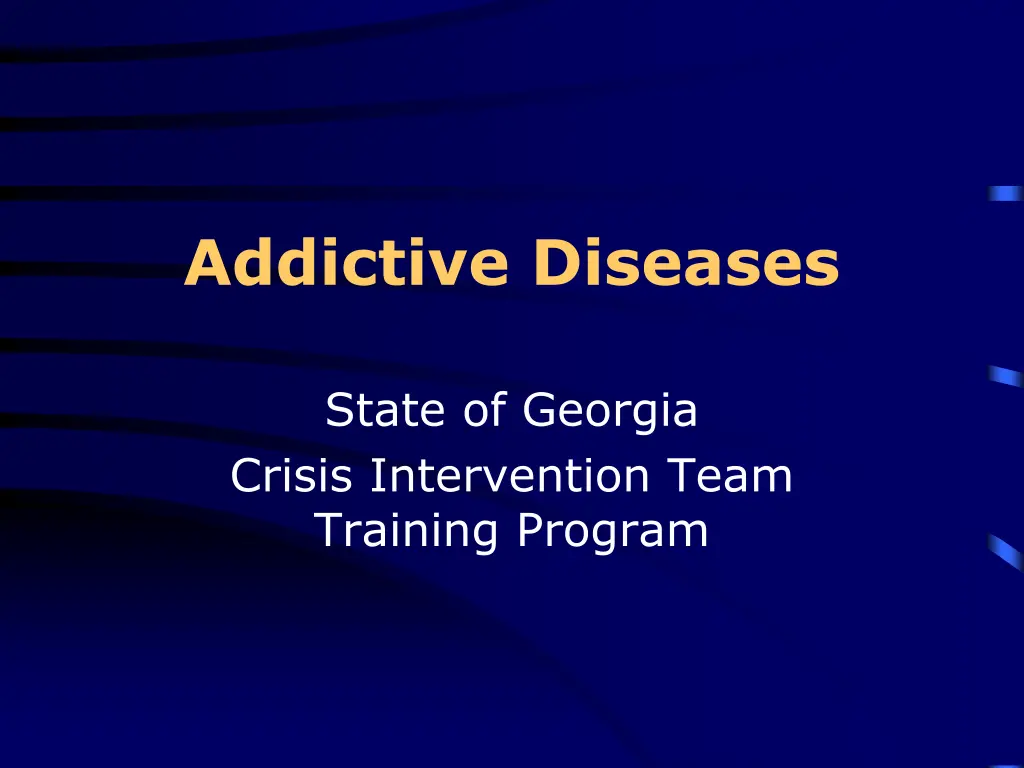
Understanding Addiction: Faces, Progression, and Intervention Strategies
Explore the diverse faces of addiction, its progression from experimentation to powerlessness, and the 4 Cs of addiction. Learn about the brain disease model, crisis intervention programs, and the chronic neglect of self often associated with addiction. Discover the importance of treatment and the multiple facets of managing addiction within different life contexts.
Download Presentation

Please find below an Image/Link to download the presentation.
The content on the website is provided AS IS for your information and personal use only. It may not be sold, licensed, or shared on other websites without obtaining consent from the author. If you encounter any issues during the download, it is possible that the publisher has removed the file from their server.
You are allowed to download the files provided on this website for personal or commercial use, subject to the condition that they are used lawfully. All files are the property of their respective owners.
The content on the website is provided AS IS for your information and personal use only. It may not be sold, licensed, or shared on other websites without obtaining consent from the author.
E N D
Presentation Transcript
Addictive Diseases State of Georgia Crisis Intervention Team Training Program
A LIFE SIGNIFICANT OTHER SPORTS SCHOOL WORK COMMUNITY $ MANAGEMENT
A LIFE including alcohol and drug use SIGNIFICANT OTHER PARTY! DRINK & DRINK & DRUGS DRUGS SCHOOL WORK $ MANAGEMENT COMMUNITY
A LIFE including alcohol and drug abuse SIGNIFICANT OTHER LEGAL PROBLEMS PARTY! PARTY! DRINK DRINK & & DRUGS DRUGS SCHOOL WORK COMMUNITY $$ MANAGEMENT
A LIFE including drug and alcohol addiction SCHOOL HOPELESSNESS DRUGS/ ALCOHOL DEPRESSION SICK JOB PROBLEMS COMMUNITY $$ MANAGEMENT SIGNIFICANT OTHER
Definition of Addiction: Chronic neglect of SELF in favor of something or someone else. ~Stephanie Covington
Addiction Has Many Faces Not all addicted persons are homeless or living in a crack house Some addicts appear to be functional, but with a closer look substances are still a problem
Addiction Addiction is a brain disease Addiction is a primary, progressive, fatal illness. A chronic disorder requiring multiple strategies and multiple episodes of intervention Treatment works in the long-run Treatment is cost-effective
Progression of Abuse to Addiction Stage One- Experimenting Stage Two- Seeking a Mood Swing Stage Three- Preoccupation Stage Four- Powerlessness/Addiction
4 Cs of Addiction Loss of Consistent Control over use Compulsivity or Craving Constantly thinking about addictive substance or process Continued use in the face of adverse consequences
Addiction Is Not What You Think Drug use and behavior are reinforcing or rewarding Reward pathway permanently altered Engaging in compulsive behavior Even when there are negative consequences Loss of control in limiting intake Craving: conscious and unconscious Disease of the brain
Why do people take drugs? They change the brain!!! For the brain effects of drug use: Reinforcement ( feel good qualities) Pleasure Avoid negative feelings Stop withdrawal Try to restore normal brain function
Addiction is a Brain Disease Prolonged Use Changes the Brain in Fundamental and Lasting Ways Cocaine Addict Brain Healthy Brain
How Does the Brain Work? Through changes in the cells within the brain Changes in brain cell activity and chemistry are produced by: EXTERNAL environmental stimuli (e.g., putting hand on a hot stove) INTERNAL biochemical stimuli (e.g., biological and behavioral changes produced by psychoactive drugs)
What Is the Relationship Between the Brain and Behavior? Alterations of brain chemistry and/or structure can change: Speech Thinking and awareness Emotions Behavior, movement Sensation (the 5 Senses) Memory storage
Dopamine Spells REWARD Release Recycle Activate
Addiction as a Brain Disease The brain of an addicted person is changed and does not function normally Major differences between the addicted vs. non-addicted brain metabolic activity receptor availability genetic expression responsiveness to drugs
The Disease of Addiction Primary Progressive Chronic Relapsing Treatable NOT curable, but you can recover
Substance Abuse Is defined as: Continued use despite negative consequences as a result of use. This stage of drug abuse is voluntary, preventable behavior. Impacts relationships and obligations Places self in hazardous situations Recurrent legal problems
Substance Dependence Tolerance (need more or diminished effect) Withdrawal (psychological and physiological problems from stopping use) Unsuccessful efforts to cut down Significant time and energy spent craving, obtaining or using substances Impacts relationships and obligations Use even with negative health consequences
Substance Dependence is a Brain Disease Addicts have lost control over their drug use because of how the drugs have changed their brain chemistry Compulsion to use is psychologically and physiologically driven
Addiction Risk Factors Genetics Young Age of Onset Childhood Trauma (violent, sexual) Learning Disorders (ADD/ADHD) Mental Illness Depression Bipolar Disorder Psychosis
Cognitive Deficits Impaired attention Memory problems short-term loss Impaired abstraction Reduced problem-solving abilities Loss of impulse control Similar performance to those with brain damage
Common Characteristics of Addicts Unemployment Multiple criminal justice contacts Difficulty coping with stress or anger Highly influenced by social peer group Difficulty handling high-risk relapse situations
Common Characteristics Emotional and psychological immaturity Difficulty relating to family Difficulty sustaining long-term relationships Educational and vocational deficits
Misconceptions about Addiction What is it? The DRUGS are the problem. It s SINFUL or a MORAL weakness It shows a lack of WILLPOWER It s a LEARNED behavior It s just a STRESS response It s just due to an untreated PSYCHOLOGICAL problem
What is a Psychoactive Drug? Drugs are Therapeutic chemicals designed to have maximal benefit with minimal risk of side effects or toxicity Psychoactive Drugs change: The Functioning of the Brain Thinking Behavior Emotions Sensation
Classification of Psychoactive Drugs Stimulants cocaine, amphetamine, methamphetamine, caffeine Nicotine Psychotherapeutics Prozac, Haldol, lithium Opiates morphine, codeine, heroin, methadone Depressants alcohol, barbiturates, inhalants, sleeping pills
Psychotherapeutic Drugs Are used to restore mental health Developed recently, beginning in the 1950s Allow patients to resume normal lives Some are potentially addicting and disrupt function E.g., antianxiety drugs (Valium, Xanax and others) and sedatives (Seconal, Soma) Most are Non-addicting: antidepressants (Prozac, Zoloft, Paxil, Celexa, Effexor) antipsychotics (Risperdal, Seroquel, Zyprexa, Haldol) anticonvulsants (Depakote, Tegretol, Trileptal, Topamax) and others
Definition of Alcoholism JAMA, 1992 Alcoholism is a primary, chronic disease with genetic, psychosocial, and environmental factors influencing its development and manifestations. The disease is often progressive and fatal. It is characterized by continuous or periodic: impaired control over drinking, preoccupation with the drug alcohol, use of alcohol despite adverse consequences, and distortions in thinking, most notably denial.
Alcohol Use Disorders are Common in U.S. 14 million adults currently have an alcohol use disorder (11 million had disorders in the past or are in recovery) 1.8 million of those receive treatment >50% of adults have immediate family member with AUD (RWJF 2001) Nicotine dep Alcohol abuse/dep Arthritis Percent of adults with... Hypertension Asthma COPD Heart disease Illicit drug abuse/dep Diabetes 0 5 10 15 20 25 30
What Drugs are Addicting? Drugs of Abuse and Dependence Caffeine Nicotine Alcohol Cannabis Cocaine Hallucinogens Inhalants Opioids Amphetamines Sedative- Hypnotics and Anxiolytics PCP
Where Cocaine Has Its Effects in the Brain
Laboratory Rats Will Self-Administer Cocaine Until They Die M.A. Bozarth and R.A. Wise (1985). Toxicity associated with long-term intravenous heroin and cocaine self- administration in the rat. Journal of the American Medical Association, 254, 81-83.
Who needs treatment? 13 to 16 million Americans need treatment for alcohol and/or other drug abuse in any year BUT Only 3 million receive care
National Institute on Drug Abuse (NIDA) Principles of Effective Treatment 1. No single treatment is appropriate for all individuals 2. Treatment needs to be readily available 3. Effective treatment attends to multiple needs of the individual, not just the drug use 4. An individual s treatment and service plan must be assessed continually and modified as necessary to ensure that the plan meets the person s needs
NIDA Principles or Effective Tx (cont d.) 5. Remaining in treatment for an adequate period of time is critical for treatment effectiveness 6. Counseling and other behavioral therapies are critical components of effective treatment 7. Medications are an important element of treatment for many patients, esp. when combined with counseling or behavioral therapies 8. Addicted or drug-abusing individuals with co-existing mental disorders should have both disorders treated in an integrated way
NIDA Principles or Effective Tx (cont d.) 9. Medical detoxification is only the first stage of addiction treatment and by itself does little to change long-term drug use 10.Treatment does not need to be voluntary to be effective 11.Possible drug use during treatment must be monitored continuously 12.Treatment programs should provide assessment for HIV/AIDS, Hepatitis B&C and other infectious diseases 13. Recovery from drug addiction can be a long-term process and frequently requires multiple episodes of treatment
Medical Detoxification Detoxification safely manages the physical symptoms of withdrawal Only first stage of addiction treatment Alone, does little to change long- term drug use
Medications for Drug Addiction Alcohol and Benzodiazepines: Librium, Ativan, Phenobarbital (withdrawal is potentially fatal if left untreated) Opiates: Buprenorphine, Methadone, LAAM, Naltrexone (withdrawal is uncomfortable, not life-threatening) Nicotine: Patches, gum, buproprion, behavioral modification
Motivation to Enter/ Sustain Treatment Effective treatment need not be voluntary Sanctions/enticements (family, employer, criminal justice system) can increase treatment entry/retention Treatment outcomes are similar for those who enter treatment under legal pressure vs voluntary
Effectiveness of Treatment Goal of treatment is to return to productive functioning Treatment reduced drug use by 40-60% Treatment reduces crime by 40-60% Treatment increases employment prospects by 40% Drug treatment is as successful as treatment of diabetes, asthma, and hypertension
Self-Help and Drug Addiction Treatment Complements and extends treatment efforts Most commonly used models include 12-Step (AA, NA) and Smart Recovery Most treatment programs encourage self-help participation during/after treatment
12-Step Programs Alcoholics Anonymous Narcotics Anonymous Crystal Meth Anonymous Gambling Anonymous Al-Anon Adult Children of Alcoholics (ACOA) Double Trouble (dual diagnosis)
Cost-Effectiveness of Drug Treatment Treatment is less expensive than not treating or incarceration (1 yr methadone maintenance = $4,700 vs. $18,400 for imprisonment) Every $1 invested in treatment yields up to $7 in reduced crime-related costs Savings can exceed costs by 12:1 when health care costs are included Reduced interpersonal conflicts Improved workplace productivity Fewer drug-related accidents

